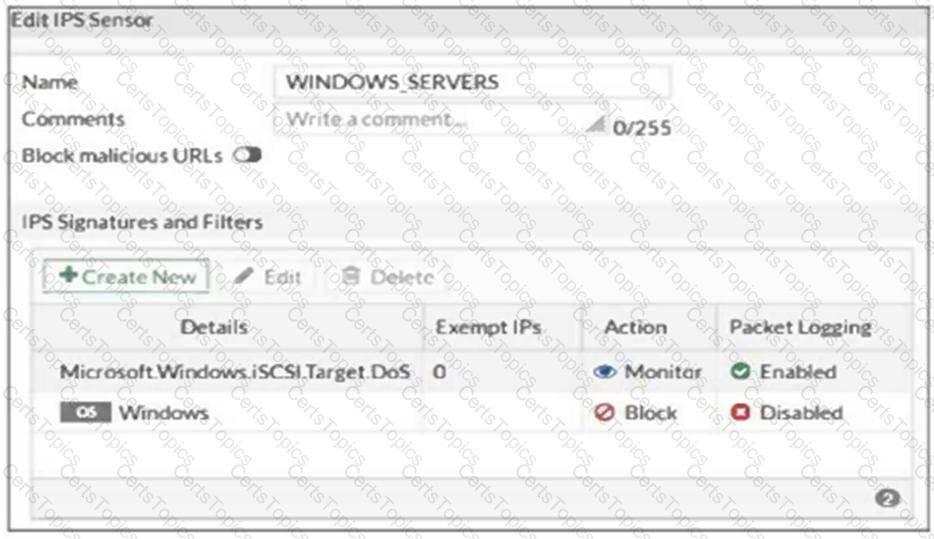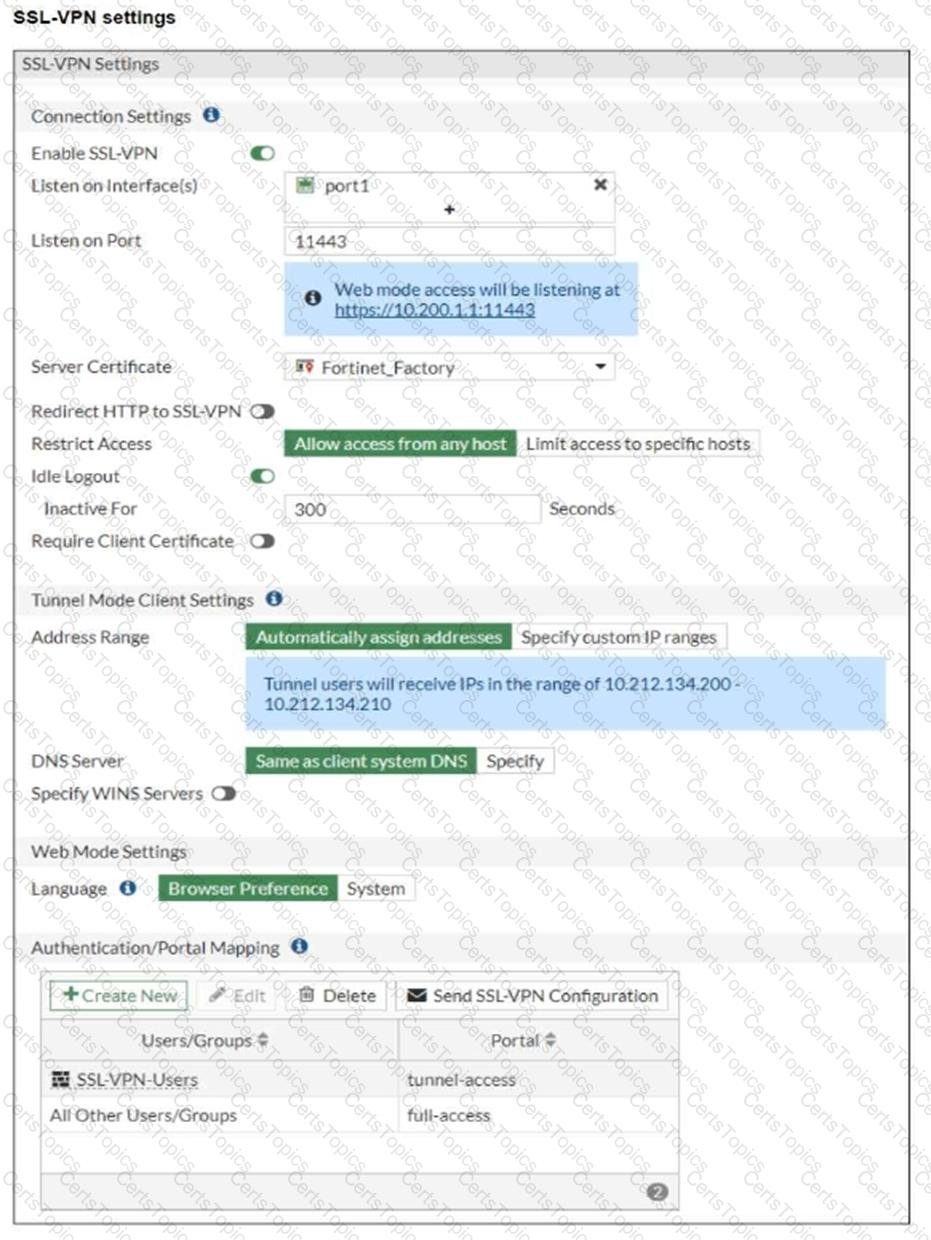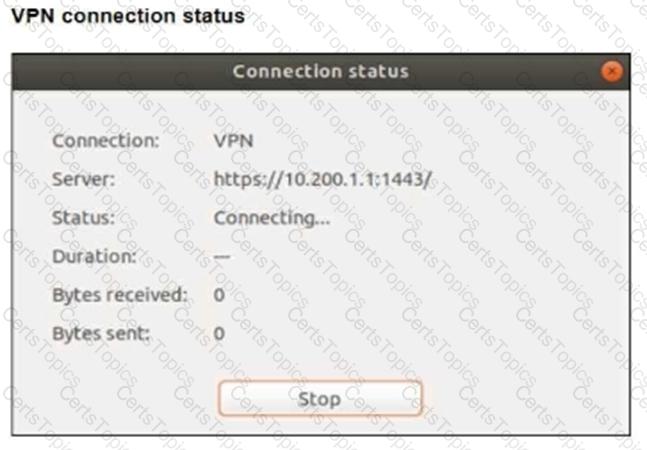Refer to the exhibit, which shows the IPS sensor configuration.

If traffic matches this IPS sensor, which two actions is the sensor expected to take? (Choose two.)
Refer to the exhibit.

Which statement about this firewall policy list is true?
Refer to the exhibits.


The SSL VPN connection fails when a user attempts to connect to it.
What should the user do to successfully connect to the SSL VPN?
Which two statements are true regarding FortiGate HA configuration synchronization? (Choose two.)